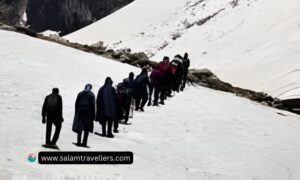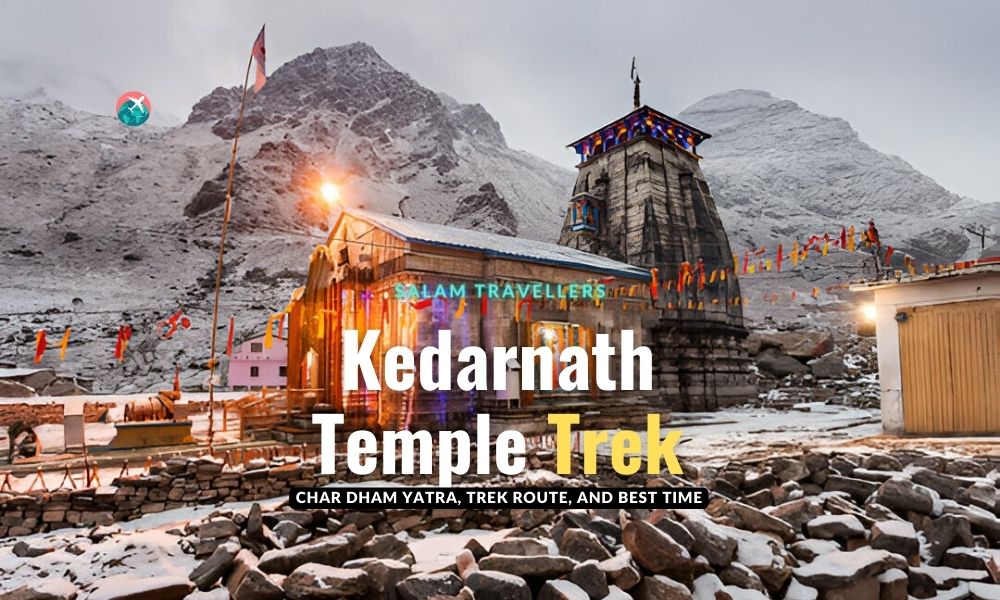
Have you been dreaming of a spiritual adventure in the majestic Himalayas? Just picture yourself reaching a sacred temple after a challenging trek. Yes, we are talking about the sacred Kedarnath Temple in Uttarakhand, the land of the gods. But wait, before you pack your bags for the Kedarnath Temple Trek for the Char Dam Yatra, read our comprehensive guide to the route and best times to travel.
Kedarnath Temple, Uttarakhand
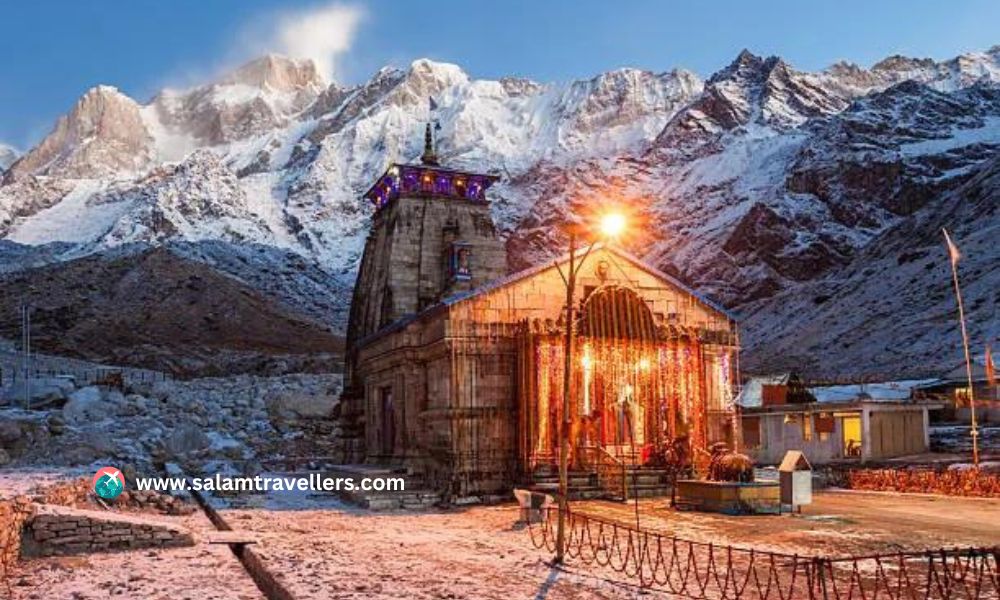
Kedarnath is one of the most renowned pilgrimage sites in India and also one of the 12 Jyotirlingas of Lord Shiva. Located in Uttarakhand’s Rudraprayag district, Kedarnath is situated at an elevation of 3,584 m near the Chorabari Glacier, which is the source of the Mandakini River.
The ancient temple of Kedarnath is dedicated to Lord Shiva and draws devotees from all over India who wish to offer prayers at this sacred Himalayan shrine. The temple is believed to have been built by the Pandavas and is mentioned in the Mahabharata. The current structure was constructed in the 8th century AD by Adi Shankaracharya, though the original temple is believed to be much older.
Also read about the Bali Pass Trek.
| Key | Value |
| Location | Garhwal Himalayan range, Uttarakhand, India |
| Deity | Shiva |
| Significance | One of the twelve Jyotirlingas, the holiest Hindu shrines of Shiva |
| Accessibility | Accessible only by a 22 km uphill trek from Gaurikund |
| Pilgrimage | Part of the pilgrimages to Chota Char Dham and Panch |
| Temple | Believed to be initially built by the Pandavas |
| Open Season | April (Akshaya Tritiya) to November (Kartik Purnima) |
| Kedarnath Temple Opening Date 2024 | 10 May 2024 Morning 7:00 AM |
| Kedarnath Temple Closing Date 2024 | November Month |
| Darshan Timing | Temple Opens At 4:00 AM & Closes Around 8:00 PM |
| Best Time To Visit | The spring (April to June) |
| Types of Registrations | Individual Registration, Group Registration |
| Modes of Registration | Online Registration, Offline Registration |
| Registration Fee | Rs. 150 per person (subject to change) |
| Physical Registration Points | Haridwar, Rishikesh |
Kedarnath Trek Route to Temple
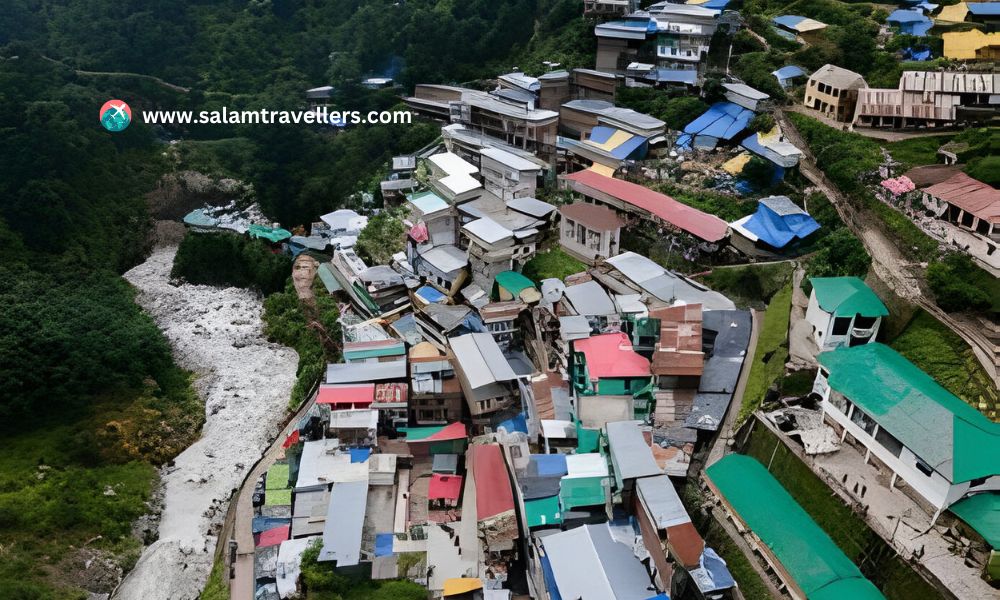
Kedarnath is perched in the Rudraprayag area of Uttarakhand. The trip to Kedarnath begins from Gaurikund, which is associated with street and rail.
To reach Gaurikund by road, you can take a bus or taxi from major cities like Dehradun (225 km), Haridwar (250 km), and Rishikesh (230 km). Buses usually take around 10-12 hours, while a taxi will be faster but more expensive. Another option is to take a train to Rishikesh or Haridwar and then a bus or taxi to Gaurikund, which takes around 5-6 hours. Some of the trains that connect to Rishikesh and Haridwar are:
- Dehradun Express
- Mussoorie Express
- Nanda Devi Express
Gaurikund has limited accommodation options, so most people continue ahead to Guptakashi (15 km) or Sonprayag (20 km) to stay overnight before starting the trek the next morning.
Also read about the Friendship Peak Trek.
How difficult is the Kedarnath trek?
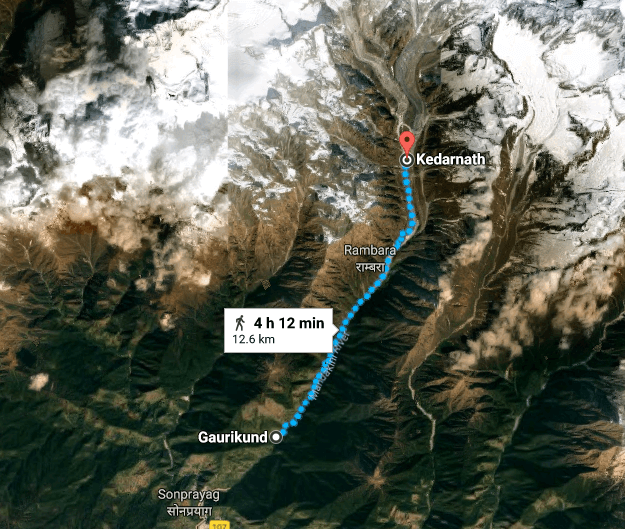
The Kedarnath trek is a moderate-level trek and can be done by beginners with some prior hiking experience. The total trek distance is about 22 km one way and involves steep ascents and descents. Proper acclimatization to altitude is required, as the highest point is at 3,583 m. A reasonable fitness level is needed to complete the trek.
Also read about the Brahmatal Trek.
Best Time for Kedarnath Temple Trek
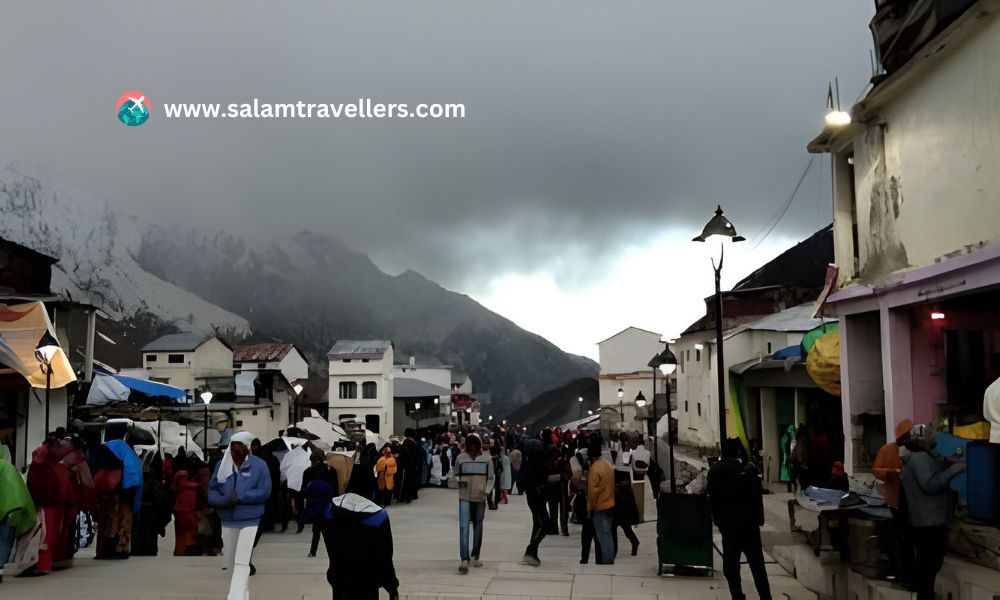
The ideal time for trekking to Kedarnath Temple is between April and June and September and November.
April to June are spring and summer, when the weather is pleasant with average temperatures of 10-25°C. The skies are clearer, and rainfall is moderate. The snow starts melting, making the trek relatively easier. The temple also opens in April/May after remaining closed for the winter.
September to November is autumn, when crowds reduce after the monsoon season. The greenery and views are excellent, with clear skies. Temperatures average 15-20°C. Though nights can get colder, with temperatures dropping below freezing, trekking during this time allows for a more peaceful and serene experience at the temple. It is important to pack layers and be prepared for changing weather conditions.
The monsoon months of July-August should be avoided due to the risk of landslides and very high rainfall. The winter months from December to March have heavy snowfall and extremely cold temperatures, making the trek difficult and potentially hazardous.
Also read about the Beas Kund Trek.
The Kedarnath Temple Trek Route

The Kedarnath trek route starts from Gaurikund. From Gaurikund, you follow a well-defined trail to Kedarnath Temple.
The trail passes through the Mandakini River valley and along its tributaries. You’ll cross several bridges over mountain streams flowing down from the snow-clad Himalayan peaks.
Some key points along the Kedarnath trek route:
- Gaurikund to Jangal Chatti (6 km) – The initial part of the trek follows a stone path. It’s a gradual ascent through the valley.
- Jangal Chatti to Bhimbali (3.5 km) – The trail gets steeper with switchbacks. You’ll get great views of surrounding peaks like Kedarnath, Meru, and Bhairav Parvat.
- Bhimbali to Gauri Shankar (5 km) – This section climbs above the tree line into alpine meadows. The trail flattens out near Gauri Shankar Temple.
- Gauri Shankar to Kedarnath (3 km) – A relatively easy walk along the Mandakini river bed brings you to the Kedarnath temple. You’ll need to show your permit at the check post here.
The total trek distance is around 16-17 km one-way. The trail gains about 1000 meters in elevation from Gaurikund to Kedarnath. Plan for 6-8 hours to cover the trek at a comfortable pace with rest breaks. Start early and carry enough water, snacks, and layered clothing.
Also read about the Kedarkantha Trek.
Char Dam Yatra Things to Look out for
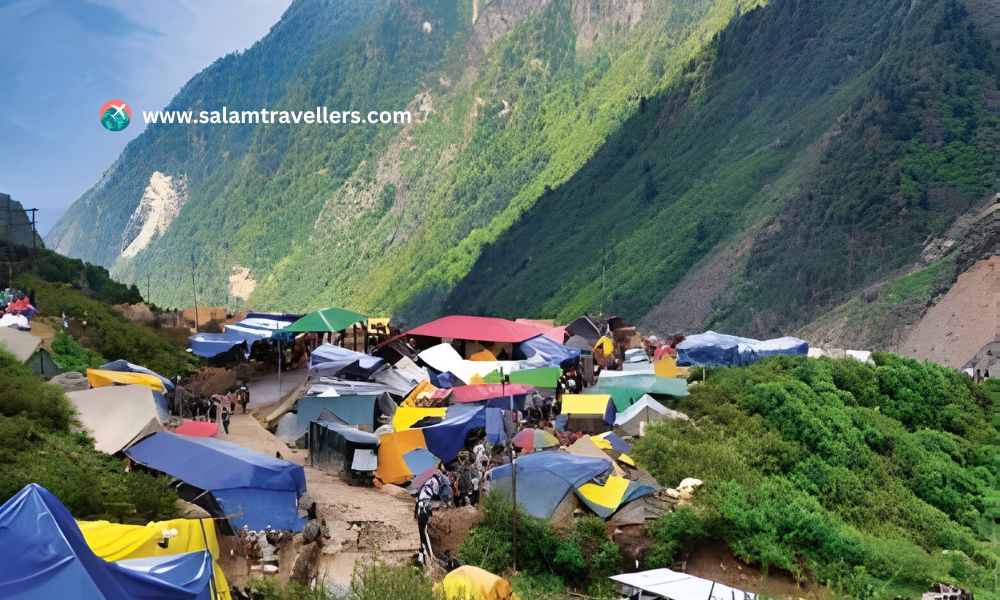
The Kedarnath trek offers stunning views of the Himalayan peaks and passes through several sacred temples and pristine high-altitude lakes. Throughout the journey, keep an eye out for the following:
Kedarnath Temple
The historic Kedarnath Temple, dedicated to Lord Shiva, is the main destination of the trek. Situated at an altitude of 3,583 m, it is one of the holiest Hindu temples and part of the Char Dam Yatra.
Bhairav Nath Temple
Just before reaching Kedarnath is the small Bhairav Nath Temple dedicated to Lord Bhairav, another incarnation of Lord Shiva.
Chorabari Tal
Chorabari Tal is a beautiful glacial lake situated at 3,900 m. It offers stunning reflections of the surrounding peaks on clear days.
Gandhi Sarovar
At 4,500 m is Gandhi Sarovar, a stunning high-altitude lake with crystal clear waters. It offers great views of Kedarnath and surrounding peaks.
Vasuki Tal
Vasuki Tal is another breathtaking high-altitude lake located 4,150 m above sea level. With its emerald green waters, it makes for an excellent camping site.
KedarKantha Peak
At 6,100 m, Kedar Kantha is the highest peak near Kedarnath, offering spectacular views of the region.
Shivling Peak
The pyramid-shaped Shivling Peak, at 6,543 m, is also visible along the trek and provides a dramatic backdrop.
Also read about the Nag Tibba Trek.
What to pack for the Kedarnath Temple Trek?
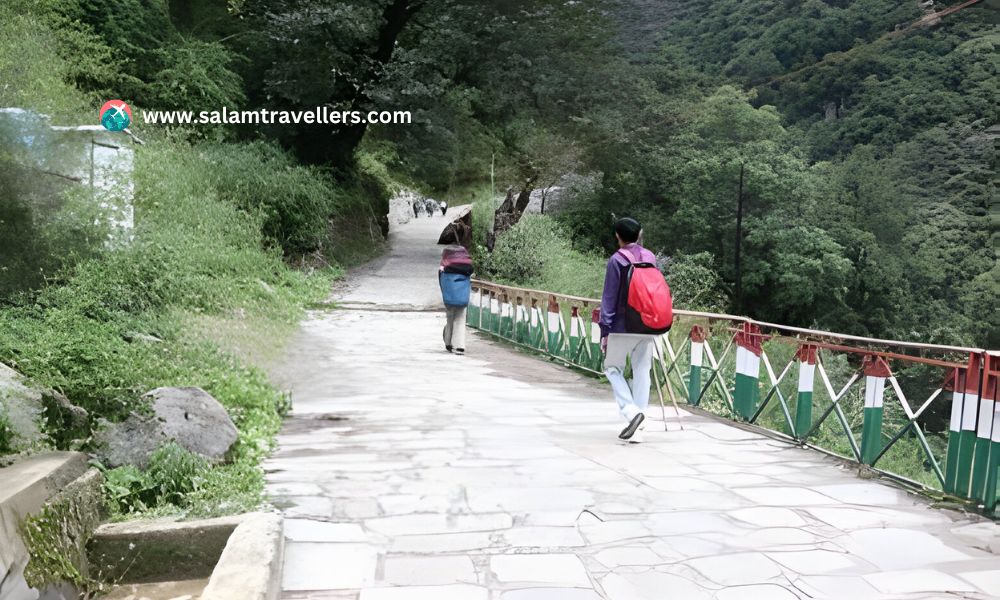
When packing for the Kedarnath temple trek, proper preparation and bringing the right gear are key to having a safe and enjoyable experience. Here are a few fundamental things to pack:
Clothing
- Base layers – Synthetic or Merino wool base layers to wick away sweat and keep you warm. Bring 2-3 sets.
- Mid-layers – Fleece jackets or pullovers. A warm down or synthetic insulated jacket.
- Outer shell – Waterproof and windproof jacket and pants to protect from the elements. Choose breathable fabrics like Gore-Tex.
- Trekking pants – Lightweight and quick dry. Convertible pants work well.
- Socks – Wool hiking socks to avoid blisters. Bring at least 4-5 pairs.
- Baselayer gloves & wool gloves – For warmth. Pack a waterproof outer glove too.
- Warm hat & sun hat – Essential for both sunny and cold conditions.
Gear
- Backpack – At least 40L capacity with a sturdy frame and hip belt. A waterproof cover is recommended.
- Trekking shoes – Waterproof with good traction and ankle support. Break them in before the trek.
- Gaiters – Keep debris out of your shoes when hiking.
- Trekking poles – Helpful for navigating steep sections.
- Headlamp + extra batteries – For pre-dawn starts and emergencies.
- Water bottles/bladder – At least 3L capacity. The trail has limited water sources.
- Sunglasses – With UV protection lenses.
- Sunscreen, lip balm – Protect yourself from the harsh sun at altitude.
First Aid Kit and Essential Toiletries
- Diamox – Helps with acclimatization to altitude. Have your doctor’s prescription.
- Pain relievers – Ibuprofen, and acetaminophen for headaches, fever, or pain.
- Blister treatment – Moleskin, bandages, antiseptic cream.
- Insect repellent, sunburn cream, hand sanitizer.
- Toilet paper, trowel – For bathroom breaks on the trail.
- Plastic bags – Useful for waste, and separating dirty/clean clothes.
Also read about the Kodachadri trek.
Is there any permit required for the Kedarnath Temple Trek?
To trek to Kedarnath, you need to obtain two types of permits, one from the Uttarakhand Tourism Development Board (UTDB) and the other from the forest department.
(Source: https://insightfuze.com/world-news/kedarnath-yatra-2024-registration-guide/)
Forest Permits
These permits are mandatory for all trekkers doing the Kedarnath trek. The permits can be obtained from the forest check posts either at Sonprayag, Gaurikund, or Kedarnath.
- At Sonprayag, the permit costs INR 50 per head.
- At Gaurikund, it costs INR 150 per head.
- At Kedarnath, it costs INR 250 per head.
So it’s recommended to get the permits at Sonprayag to save money. You need to submit a copy of a government-approved ID proof, like an Aadhaar card. The permit is valid for 3 days. Make sure to get the permit before starting the Kedarnath Temple Trek, as you will be checked at multiple places along the route.
Yatra Pass
Planning a pilgrimage to Kedarnath? Don’t forget to secure your Yatra Pass or Chardham Permit! This mandatory pass ensures controlled access to the holy temple and surrounding areas. Issued by the Uttarakhand Tourism Development Board (UTDB) or local authorities, it regulates visitor flow for a smoother experience.
The application process might vary slightly based on current guidelines. Typically, you can obtain the Yatra Pass online via the UTDB website or in person at designated counters in Rishikesh, Haridwar, or other authorized locations. This website (https://registrationandtouristcare.uk.gov.in/) enables you to register online.
Remember, staying informed is key! Before your Kedarnath Yatra, double-check the latest guidelines and requirements with the UTDB or local authorities. Regulations can change, and you want your pilgrimage to be as fulfilling as possible.
Also read about the Chopta Trek.
Health and Safety
A medical checkup is mandatory for all pilgrims before attempting the 16 km trek to Kedarnath. This moderate-to-steep hike commences from Gaurikund between 4:00 a.m. and 1:30 p.m. due to safety regulations. Kedarnath lies within the Kedarnath Wildlife Sanctuary, and trekking after these designated hours is prohibited. Similarly, pilgrims with heart or respiratory conditions should consult a doctor before undertaking this high-altitude journey. For your comfort, the route is well-equipped with tented accommodation, drinking water stations, restaurants, and small shops.
Also read about the Valley of Flowers Trek.
Pack your Bags!
The Kedarnath Temple Trek is a challenging but rewarding experience that offers stunning Himalayan views and a chance to visit a sacred Hindu temple. The ideal time to trek is between April-June and September-November, when the weather is pleasant and the trails are clear. With proper preparation, including obtaining the necessary permits and packing the right gear, you can ensure a safe and enjoyable trek to Kedarnath Temple. So pack your bags and trek to this unforgettable pilgrimage!
Stay tuned for more adventure guides from Salam Travellers.


